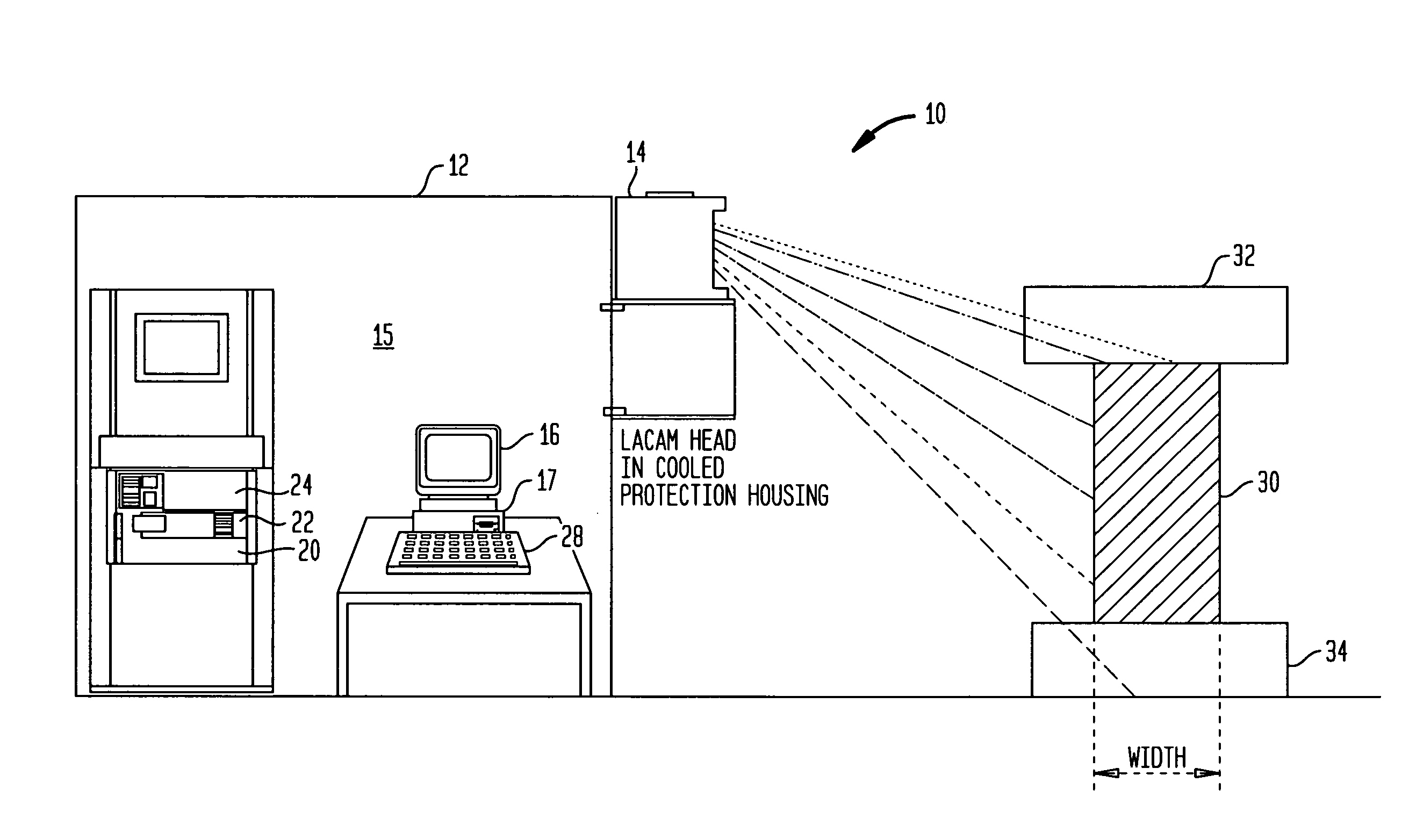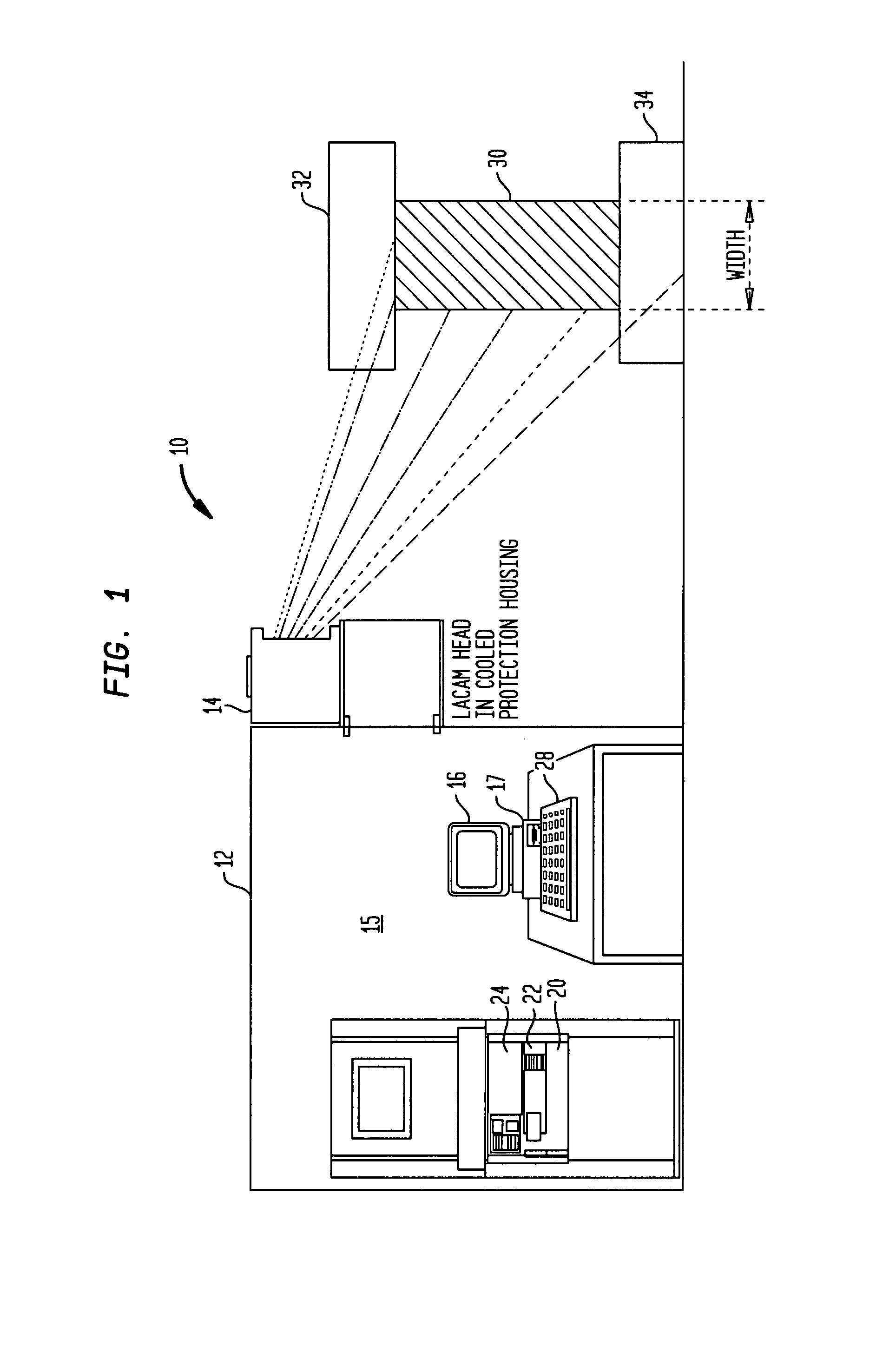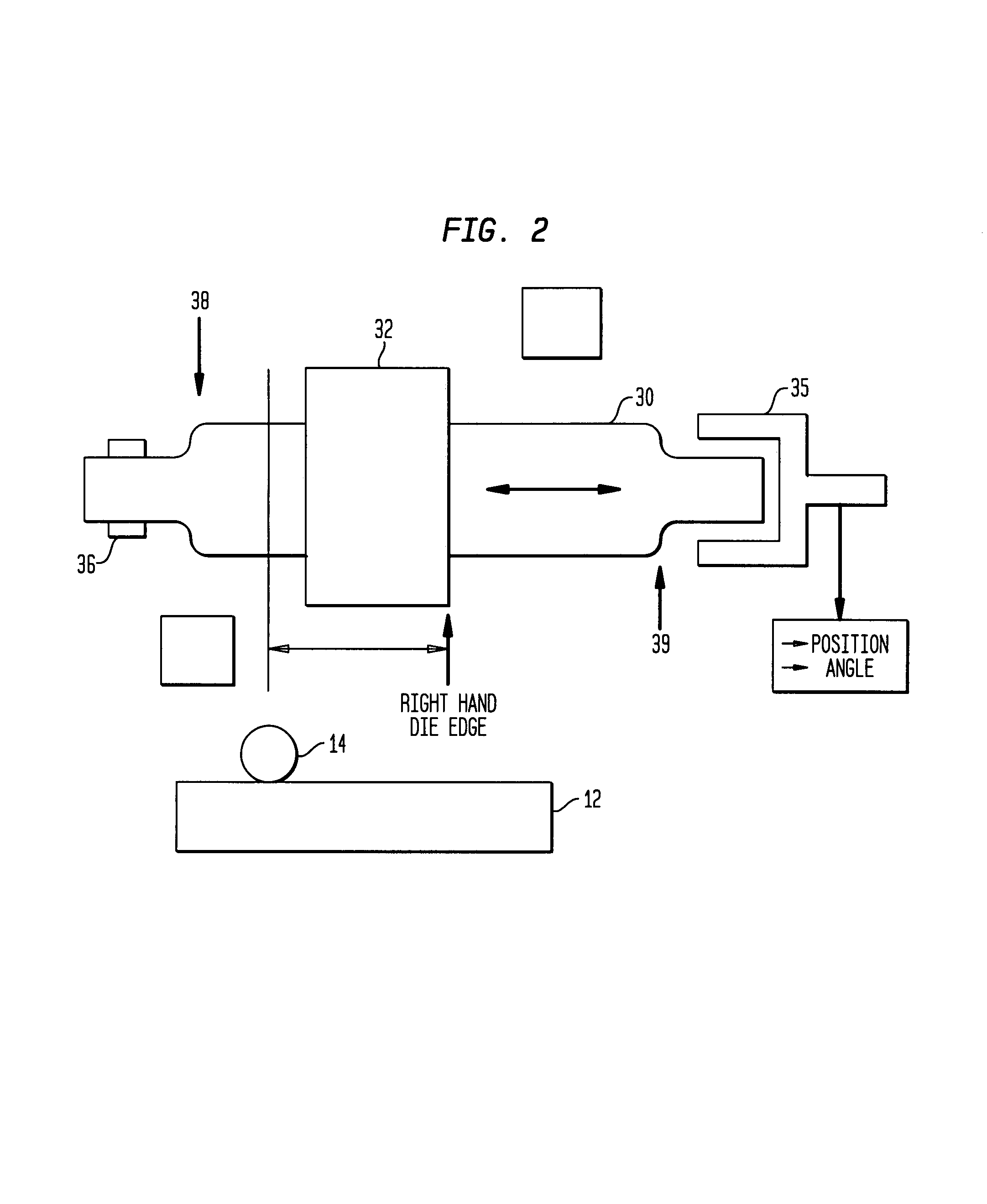Method and apparatus for optimizing forging processes
a technology of forging process and optimizing method, which is applied in the direction of metal working apparatus, manufacturing tools, shape safety devices, etc., can solve the problems of high rejection rate in terms of quality management and economy, loss of work time, material and/or energy costs,
- Summary
- Abstract
- Description
- Claims
- Application Information
AI Technical Summary
Benefits of technology
Problems solved by technology
Method used
Image
Examples
Embodiment Construction
[0014]The invention is best understood by reference to the accompanying drawings in which like reference numbers refer to like parts. It is emphasized that, according to common practice, the various dimensions of the component parts of the apparatus as shown in the drawings are not to scale and have been enlarged for clarity. Also, the directional designations “left” or “right” are not to be construed as limited to any specific orientation but, rather, are for reference purposes as they pertain to the views as shown in the drawing figures.
[0015]According to the apparatus and method of the present invention as described herein, a contactless method and apparatus are provided for controlling a forging operation using a contactless laser profile measurement. The method and apparatus are particularly useful in controlling center line consolidation of a workpiece during a cogging operation.
[0016]Briefly, the method of the present invention measures the real-time length of a workpiece bet...
PUM
| Property | Measurement | Unit |
|---|---|---|
| angle | aaaaa | aaaaa |
| length | aaaaa | aaaaa |
| height | aaaaa | aaaaa |
Abstract
Description
Claims
Application Information
 Login to View More
Login to View More - R&D
- Intellectual Property
- Life Sciences
- Materials
- Tech Scout
- Unparalleled Data Quality
- Higher Quality Content
- 60% Fewer Hallucinations
Browse by: Latest US Patents, China's latest patents, Technical Efficacy Thesaurus, Application Domain, Technology Topic, Popular Technical Reports.
© 2025 PatSnap. All rights reserved.Legal|Privacy policy|Modern Slavery Act Transparency Statement|Sitemap|About US| Contact US: help@patsnap.com



